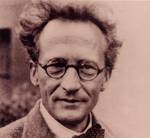

In February 1943, Erwin Schrödinger delivered a series of lectures entitled 'What is Life' at the Dublin Institute of Advanced Studies. In these lectures, and the book (1) which followed, Schrödinger examined the relationship between the laws of physics and the mechanisms of life. His work had a seminal influence on scientific thought. In particular, it provided impetus to the development of molecular biology, and over a longer term to the area of research that we now call Systems Biology. See also P. Wellstead: Schrödinger's legacy (PDF 178.0 kBytes).
Systems Biology follows in Schrödinger's steps by applying systematic methods of analysis developed in the physical sciences to living organisms. It starts from the holistic view that the behavior of a collection of interacting objects (a system) can only be explained by analysis of the entire system. In biological terms, most of the interesting properties of life arise at the systems level and the dynamical interactions of the system components.
The idea of a systems view of biology is not new. For example, through the 1940’s to 60’s, Wiener, Tustin and Bertalanffy (2,3,4), described a systems approach to living organisms. However, breakthroughs in molecular biology during the last decades have enabled the analysis of the some of the dynamical interaction in side living cells and between cells. It is even possible to conceive of entire dynamical cellular processes being simulated in a computer - in the same way that we now simulate entire automobiles in computers before we build them. This however is for the future. For the moment Systems Biology research offers many new and exciting research challenges, and the tangible hope that methods dynamical analysis, modelling and simulation can provide a deeper insight into the mechanisms of life. In doing this we begin to answer Schroedinger's question: What is Life?